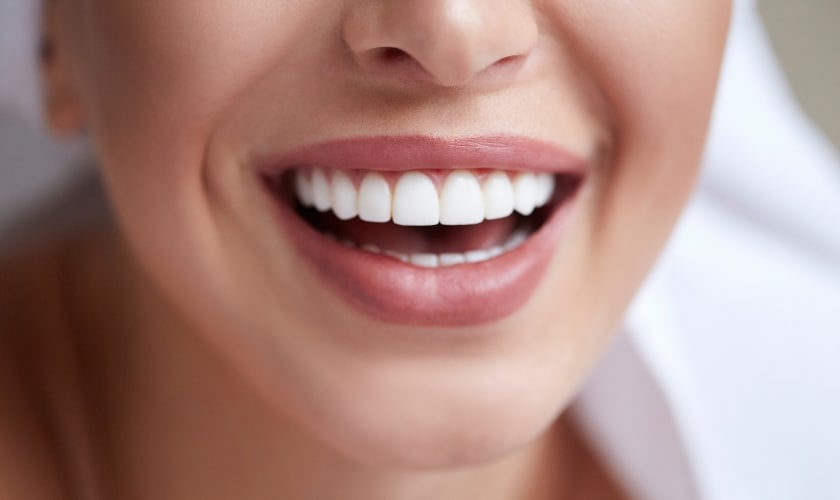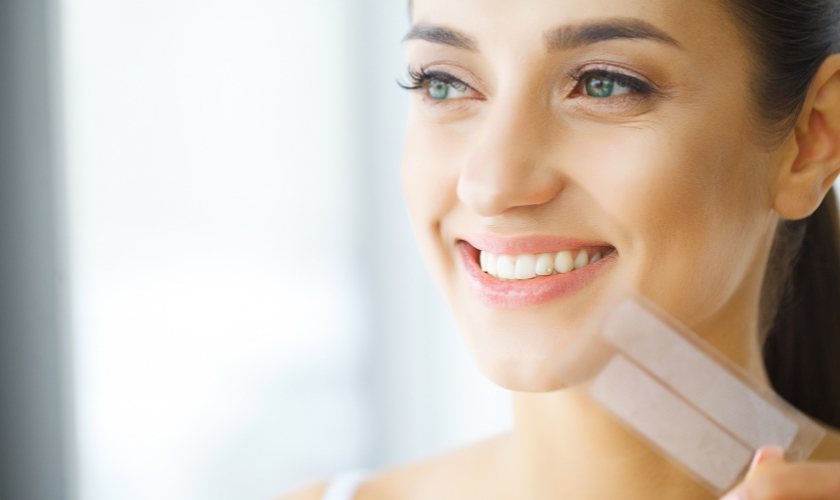
By Gentle Touch Dentistry Richardson
Do you have yellow teeth? You’re not alone! Discolored teeth are a common issue that many people face, but it’s essential to understand why your teeth may be turning yellow and how to protect your pearly whites. This blog will discuss the possible causes of yellowing teeth and professional ways to get them back to their natural white color.
Causes of Yellow Teeth
Yellow teeth can be caused by various factors, including poor dental hygiene, smoking or chewing tobacco products, aging, some medications, excessive fluoride intake, and even eating certain foods. Some of these factors can be avoided or modified to improve the color of your teeth, while others are out of our control.
Poor Dental Hygiene
Properly brushing twice daily with a soft-bristled toothbrush and flossing once a day will help keep plaque build-up at bay. If plaque accumulates on your teeth for too long without removal, it can harden and cause tartar, which leads to yellow discoloration.
Smoking/Chewing Tobacco Products
We all know that tobacco products harm our health but also lead to yellowing teeth over time. The chemicals in cigarettes and other forms of tobacco can stain the surface of your teeth, and eventually, they will become darker in color.
Aging
As we age, our teeth naturally start to yellow due to a decrease in enamel over time. As saliva gradually decreases with age, it becomes less effective at washing away bacteria that cause staining. It leads to the accumulation of plaque and tartar on the surfaces of your teeth which further discolors them.
Some Medications
Antihistamines and some blood pressure medications contain chemicals that can lead to yellowing of the teeth when taken for long periods. Talk to your doctor about possible side effects from medications you are taking and discuss ways to minimize their impact on your teeth.
Excessive Fluoride Intake
Too much fluoride can lead to the yellowing of the teeth, a condition known as fluorosis. Be sure to use toothpaste with the recommended amount of fluoride, and avoid drinking too much water with high mineral levels.
Certain Foods
Eating certain foods such as blueberries, cranberries, apples, and tea can cause staining on the surface of your teeth over time. In addition, acidic foods like oranges, lemons, and tomatoes can erode enamel, making teeth more susceptible to discoloration from other factors such as smoking or poor dental hygiene.
Professional Teeth Whitening
Professional teeth whitening may be right for you if you’ve tried home remedies to whiten your teeth and they haven’t yielded the desired results. A dentist or professional hygienist performs professional whitening treatments and can be done in the office or at home with specialized trays. In-office treatments usually take an hour or less, depending on the severity of discoloration, and can help you achieve several shades of whiter teeth in one session.
At-home professional whitening kits come with preloaded trays that fit comfortably over your teeth and must be worn for a certain amount each day. After achieving your desired shade of whiteness, professional kits also come with special maintenance gels to help keep your teeth bright in the long term. Many professional kits also contain desensitizing gels that help minimize sensitivity caused by bleaching agents.
Home Remedies for Healthy Teeth
In addition to professional treatments, several home remedies can be used to maintain healthy white teeth. Brushing twice daily with a soft-bristled toothbrush and flossing once daily will help keep plaque build-up at bay. Avoid smoking and excessive consumption of sugary drinks such as soda or sports drinks that can cause staining on the surface of your teeth over time. In addition, eating natural foods like apples, carrots and celery can help remove surface stains while providing essential vitamins and minerals for oral health.
Final Words
Following these simple tips and professional teeth whitening treatments, you can protect your pearly whites from yellowing. Regular brushing and flossing, avoiding food and drink those stain teeth, and professional treatments are crucial to maintaining strong, healthy teeth for a lifetime.
To keep your teeth bright and white, brush twice daily with a soft-bristled toothbrush, floss once a day, avoid smoking or eating foods that may cause stainings, such as blueberries or cranberries, and consider professional teeth whitening treatments if needed.
Professional teeth whitening treatments are available in the office and in at-home kits. Office treatments typically take less than an hour and may give you several shades of whiter smiles in one session. At-home professional kits come with preloaded trays that fit comfortably over your teeth and must be worn for a certain amount each day to achieve the desired shade of whiteness.
Professional teeth whitening is generally safe by a professional dentist or hygienist. With professional-grade products, the bleaching agents are much stronger than over-the-counter options, but they are still safe on the enamel of your teeth when used properly.






